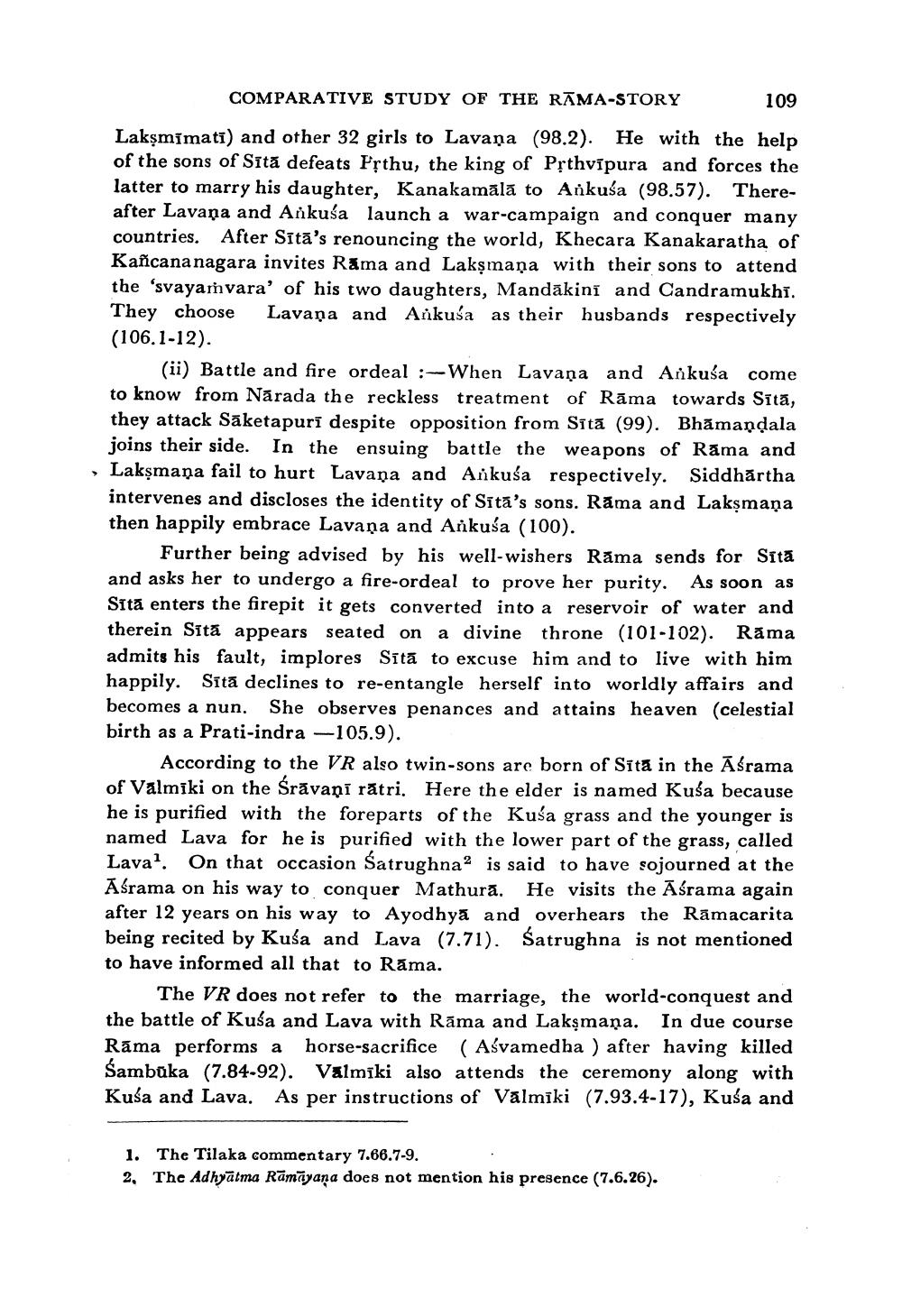________________
COMPARATIVE STUDY OF THE RĀMA-STORY
109
Lakşmimati) and other 32 girls to Lavaņa (98.2). He with the help of the sons of Sītā defeats Frthu, the king of Pộthvīpura and forces the latter to marry his daughter, Kanakamālā to Aukusa (98.57). Thereafter Lavana and Ankusa launch a war-campaign and conquer many countries. After Sitā's renouncing the world, Khecara Kanakaratha of Kancananagara invites Rama and Laksmana with their sons to attend the 'svayamvara' of his two daughters, Mandakini and Candramukhi. They choose Lavana and Ankusa as their husbands respectively (106.1-12).
(ii) Battle and fire ordeal :- When Lavana and Ankusa come to know from Nārada the reckless treatment of Rāma towards Sītā, they attack Sāketapurī despite opposition from Sítā (99). Bhămandala
joins their side. In the ensuing battle the weapons of Rama and » Lakşmaņa fail to hurt Lavana and Ankusa respectively. Siddhartha
intervenes and discloses the identity of Sita's sons. Rāma and Lakşmaņa then happily embrace Lavana and Ankusa (100).
Further being advised by his well-wishers Rama sends for Sita and asks her to undergo a fire-ordeal to prove her purity. As soon as Sita enters the firepit it gets converted into a reservoir of water and therein Sită appears seated on a divine throne (101-102). Rāma admits his fault, implores Sitā to excuse him and to live with him happily. Sita declines to re-entangle herself into worldly affairs and becomes a nun. She observes penances and attains heaven (celestial birth as a Prati-indra -105.9).
According to the VR also twin-sons are born of Sita in the Aśrama of Valmiki on the Śrāvani rātri. Here the elder is named Kuša because he is purified with the foreparts of the Kusa grass and the younger is named Lava for he is purified with the lower part of the grass, called Laval. On that occasion Satrughna2 is said to have sojourned at the Aśrama on his way to conquer Mathura. He visits the Aśrama again after 12 years on his way to Ayodhyā and overhears the Rāmacarita being recited by Kuśa and Lava (7.71). Śatrughna is not mentioned to have informed all that to Rāma.
The VR does not refer to the marriage, the world-conquest and the battle of Kuśa and Lava with Rāma and Lakşmaņa. In due course Rāma performs a horse-sacrifice (Aśvamedha ) after having killed Sambūka (7.84-92). Valmīki also attends the ceremony along with Kuśa and Lava. As per instructions of Valmiki (7.93.4-17), Kuśa and
1. The Tilaka commentary 7.66.7-9. 2, The Adhyatma Rāmāyaṇa does not mention his presence (7.6.26).




